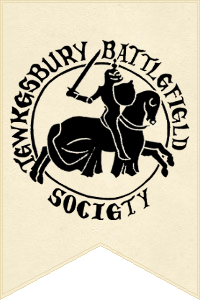March 8th 1471: Preparing for War
The Coventry Leet Book, held in the Herbert Museum, Coventry,
The Coventry Leet Book, the Mayor’s Register, recorded all the important transactions of the ancient City of Coventry, which was wealthy and important through the Middle Ages, thriving on the cloth trade. Despite its proximity to Warwick’s castle, it was Yorkist supporting, possibly because Edward was seen as the better bet for prosperity.
In 1470, the book recorded Warwick’s arrival in England and the retribution he took:
And then the duke of Clarans, the yrle of Warwic, the yrle of Oxynford, the yrle of Shroyshere the lord Stanley, the bysshoppe of Yorke went to the towre at London, & sett owt off prison kyng Harre the Syxt; the whyche hade he ix yere & a halfe & more as a prisonere, & brohgt hym to the bysshoppes palys at Powlys in London, & made hym thare to take on hym to be kyng as he was a-fore-tyme. & then was the yrle of Wyrseter behyd at London. & after Cristmas Sir Rog. Vahgan was byhedyd at Chapstowe. & the quene that was wyfe to kyng Edward, with hyr moder, the duches of Bedford, toke seynt-wary [sanctuary] at Westmynster, & there the quene was lyght of a son that was crystonyd Edward.
Later, the Leet Book records Warwick preparing to keep his promise to King Louis and attack the Duke of Burgundy. The passage has been torn and damaged, but is the only surviving account. Mem. quod viij die Marcii maior receptt litteram a rege missam que scripta erat xxij die Februarii apud Westmonasterium pro soudores. [Sent February 22nd, received 8th March. The Mayor received a letter from the King at Westminster for soldiers]. The remainder of the passage has been torn but the essence is that they are to go with the Earl of Warwick to Flanders. Such a request is likely to have divided the loyalties of the population; it would probably not be popular with the wool merchants, but more so with the craftsmen. There follows a table of payments assessed and made towards the expedition, amounting to £66 7s 6d; £26 16s 5d unpaid. The city paid the wages of 40 soldiers for two months at 6d per day and £3 to Harold Baker for jackets for them.
The next entry signals a different approach. The city was being fortified, presumably news of King Edward’s impending return had spread and another bout of civil war was anticipated.
Delivered to Rob. Brodmedew and his fellows by Richard Alen to Cheylesmore yate a gun and two chambers, a hand gun and thirty-five pellets.
Delivered to Robert Onley a serpentine gun and a staff gun and sixteen pellets and a chamber to a gun.
Delivered to John Wylgrys a great gun and a chamber thereto and a staff gun and a bag with th…..
Delivered to William Saunders and Thomas Dowve ……
Though not a lot to defend the city, these guns were a recent import to England, a new technology. They would be heavily reinforced by trusted English archers.

